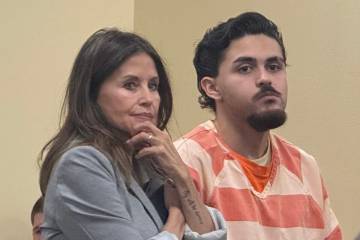Nevada’s mask mandate to be updated every two weeks
Last week, Nevada Governor Steve Sisolak and the Nevada Health Response team announced that the state would be implementing a new mask mandate as of July 30 and as was to be expected, there were plenty of questions from the public and county government officials regarding the precise scope of the new mask mandate. As such, the Nevada Health Response team put out an informational sheet providing additional details on the state’s new mask rules.
One major highlight of that informational sheet addresses how often the Silver State’s counties will be reviewed and what is required in order for a county to ditch the mask mandate. According to the document, every county will be reviewed on a weekly basis but counties must remain out of the “high” or “substantial” transmission category for a full two weeks before the state will allow them to forgo to the new mask mandate.
“Transmission data will be reviewed weekly every Tuesday by the Nevada Department of Health and Human Services (DHHS) based on the data available on the CDC county tracker,” the informational sheet states. “DHHS will provide updates weekly every Tuesday to counties and the public informing them of their status.”
The document goes on the explain that a county cannot relax masking requirements until it has spent two consecutive weeks in a transmission classification that is lower than “high” or “substantial”. Likewise, those counties that are not currently required to follow the state mask mandate will not be made to do so until they have spent two consecutive weeks in the “high” or “substantial” transmission categories.
“If a county’s status changes, it will have until that Friday of the same week to implement that change,” the document reads.
It is also important for residents to note that the CDC county tracker data is updated on a daily basis, so a check of those statistics will not always align with the figures the state is using to make its determination on which counties need to mask up. The information from Nevada Health Response states, “… a county’s masking requirement status may not always match what is on the CDC website.”
The new state mask mandate requires all persons in “high” or “substantial” transmission counties, whether they have been vaccinated or not, to put on a face covering when in a public indoor setting, leading many to ask what exactly constitutes such a setting.
The informational sheet addressed this question as well, detailing, “A public indoor setting is any indoor area where other people who are not members of your own household are present… ‘Indoor’ means any enclosed space that has a listed fire code capacity, or is primarily enclosed, whether by rigid, permanent or temporary wall and roof structures. This would include, for example, tents with walls. However, it does not include structures that consist solely of an overhead cover, such as canopies or awnings.”
The information provides a list of examples of indoor public spaces, which includes offices, break rooms and other areas where people from multiple households may interact, as well as grocery stores, shops, malls, casinos, theaters, museums, art galleries, public buildings such as the DMV and welfare offices, gyms, fitness studios and other such businesses and venues. The mask mandate also applies to public and private transportation options that have been or will be utilized by other people, including taxis, private car services, monorails, trams and ride-shares.
In the workplace, for those working in “high” or “substantial” transmission counties, they will be required to wear a face mask when interacting in-person with members of the public; when in any space visited by the general public even if no one else is present; when in any space where food is prepared or packaged, for sale or generally distributed to others; when walking through common areas such as hallways, stairs, parking areas and elevators; and when in any room or enclosed area where other people, except for members of their own household, are present.
As for those who are exempt from the mask requirements, these include children who are 9 years of age or younger except in school settings, which will be addressed by future guidance, as well as people who have a medical condition, disability or other health reason and those who are experiencing homelessness. Those who are hearing-impaired or who are communicating with a person who is hearing-impaired, are also exempt.
There are certain other exceptions to the mask rules as well and singers, comedians, magicians, open-mic and karaoke performers, etc., do not have to wear them when performing. Musicians who need to use their mouth when playing do not have to wear a mask either when practicing or performing and neither do athletes while they are practicing or playing.
For the general public, the state stipulates that people in “high” or “substantial” transmission counties can only temporarily remove their masks in indoor public settings if they are actively eating or drinking, or if they are obtaining a service for which the nose or mouth must be accessible.
As of today, the only counties in Nevada that are not subject to the new mask mandate are Storey and Pershing, which have a “low” transmission rate, and Eureka, Humboldt and Lander, each of which is categorized as an area of “moderate” transmission.
For more information on the state’s mitigation and management of the COVID-19 pandemic visit www.nvhealthresponse.nv.gov
To view statistics regarding the pandemic visit www.covid.cdc.gov
Contact reporter Robin Hebrock at rhebrock@pvtimes.com
















